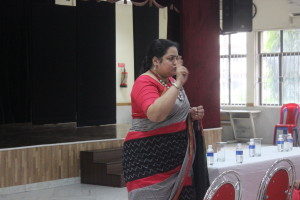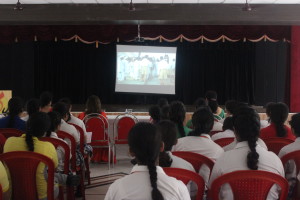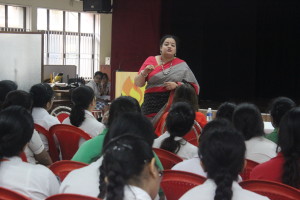History for Peace is now in its fourth year. After each conference, we have been working on effective ways of outreach, dissemination and feedback, organizing various smaller events and workshops. In 2017, we organised Conference to Classroom, a workshop conducted by four teachers from Modern High School for Girls (MHS) for teacher trainees from the Modern Academy of Continuing Education (MACE) and teachers from other city schools. The teachers from MHS had participated in The Idea of India-the third annual History for Peace conference and had subsequently designed and implemented lesson plans based on their takeaways from the conference.
This year, we have implemented a structured outreach programme—History for Peace Outreach—with a core group of experienced history educators. The programme is designed in such a way that one educator from the core group takes a class in a city school, designing the lesson in such a way that it fits with the curriculum and incorporates innovative pedagogy as well as what we at the project are constantly striving for—using history as a vehicle for peace education.
Ms. Priyadarshinee Guha, Dean of Activities at The Heritage School, conducted the first outreach class for 60 students of Class XI and XII at Mahadevi Birla World Academy (MBWA). Senior history teachers were also present at the session. Ms. Guha, who has been a history teacher for over two decades and has conducted various workshops for PeaceWorks chose to work on Gandhi, given that the topic was a part of the curriculum. After a very brief introduction to the project, Ms. Guha began her class with a clip from Richard Attenborough’s iconic film Gandhi. The film, released in 1982, takes the viewers on a journey of Gandhi’s life, the non-cooperation movement, India’s struggle for independence, right upto his assassination. The clip that Ms. Guha chose was that of Direct Action Day or the Great Calcutta Killings of August 1946. After the screening, she gave the students a background of the events that were shown and spoke extensively about Gandhi’s beliefs, his regrets about the events that transpired after independence, i.e. Partition, Jinnah and Nehru and the significance of Direct Action Day, in terms of the fact that the sole reason behind the event was communal strife.
Ms. Guha spoke of the importance of connecting what one learns through history to what is happening in the present, given that we are living in very difficult times—with communal conflict in the news everyday. She also connected what happened in in 1946, simply in terms of physical space, asking the students if they had been to central and north Calcutta—where much of the violence had occurred because of the religious demography of that area. She also spoke of the importance of questioning what one reads and learning to critically analyse information.
In the discussion that followed, the students asked Ms. Guha a range of questions, from details about the Freedom struggle to what resources they can access for a non-biased account of history.
Visual aids are a very powerful and effective pedagogical tool, which can lead to in-depth discussions and learning that sometimes textbooks cannot inspire. Reading extensively, as Ms. Guha mentioned repeatedly, is also essential to expand on that very learning. For as students and teachers of history, critical analyses, discussion and debate is absolutely vital. For in this era of fake news, informed, impartial history education is our first line of defence.
The first History for Peace Outreach session was held on 25 July 2018. For details of the project, visit www.historyforpeace.pw
– Paroma Sengupta



